#outdoors activities
Text

Redfish on the Half Shell
By Will Leschper
Redfish on the Texas coast are prolific and tasty. Here’s an easy recipe to enjoy one of our best-eating game fish if you have success at the jetties!
Ingredients
• 4 to 6 redfish fillets with skin and scales on (one keeper-size fillet is good for at least one person)
• 6 tablespoons olive oil
• 2-3 lemons, halved
• salt and pepper, to taste
• *Paul Prudhomme’s Blackened Redfish Magic seasoning blend (You also can use fresh chopped herbs such as basil, mint or parsley in place of an all-in-one blend; there’s also Tony Chachere’s line of seafood spices that work great)
• *Compound butter mixture with the fresh herbs (optional, in place of olive oil or in addition to oil)
Instructions
Preheat your outdoor grill. Take your redfish fillets (with skin/scales still on one side) and drizzle/brush with olive oil. Sprinkle your seasoning mixture and salt and pepper on top of the oil.
Grill the fish, flesh side down, over medium-high heat for 2 minutes. Flip the fillet so the scales are on the grilling surface and cook for another 5 to 7 minutes, or until cooked through to your liking. Squeeze a lemon half over each fillet. You also can spoon the compound butter mixture on top as well. Spoon out the flesh that should release easily from the skin and serve by itself, with pasta or accompanying your favorite sides.
5 notes
·
View notes
Text
Family-friendly immersion into the night environment.
Join Wildbark and the Australasian Dark Sky Alliance on the International Day of Light 2023 for this family-friendly immersion into the night environment. Ideally situated on the outskirts of Canberra in the Mulligans Flat Woodland Sanctuary, Wildbark provides the perfect opportunity to stargaze, take a guided night tour in the natural enclosure, learn about the night environment, hear about our cultural connections with the night sky, or sit back and soak up the sunset.

Wildbark - Dark Ark.Date: 16/05/2023 - 16/05/2023.
Canberra, Australia.
#Australasian Dark Sky Alliance#night environment#night sky#Mulligans Flat Woodland Sanctuary#Dark Ark#international day of light#16 may#Australia#Outdoors activities#students activities#children activities
0 notes
Text

Commission for @bucky-the-liyote ! Thank you so much!
#furry art#furry illustration#digital art#outdoor activities#mushrooms#dandelions#furry#furry artist#fat fashion#fat art
746 notes
·
View notes
Text
I don't know what suddenly made people feel comfortable with vaping anything or smoking weed in non-smoking areas just because it's "not a cigarette" but you all need to get uncomfortable again. An airborne irritant is an airborne irritant. It doesn't matter that it's "safer than smoking" or "just weed" or even "just flavoring and no nicotine". Smell sensitivities don't care. Migraines don't care. Allergies don't care. Asthma doesn't care. Lung issues don't care. Don't smoke or vape indoors except in your own house or a designated smoking area. If you need to smoke or vape outside move to a sparsely populated area, make sure no one is directly downwind of you, and do your thing. I'm not asking people not to smoke or vape in general, that would be hypocritical, I use medical marijuana myself. Just please consider than non-cigarette smoke and vapor is not harmless and apply the same rules to yourself that are applied to people who smoke cigarettes.
#I'm like ''oh finally an outdoor activity I can take my mask off'' and spend the whole day getting weed smoke and vape clouds#blown in my face
399 notes
·
View notes
Text
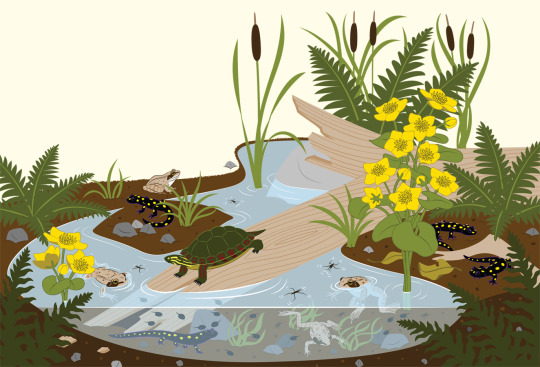

Went out to the pond to take this photo, and heard the first spring peepers of the year. Yay! It's officially spring in Downeast, Maine.
This illustration is one over 100 I did for the forth Nature Smarts activity book from Mass Audubon and Storey Publishing. Nature Smarts Workbook: All About Water, Ages 4-6 is available for preorder now, and out May 21st. You can find it through Amazon, Mass Audubon, and other book sellers.
#vernal#pond#pool#amphibians#frogs#illustration#jada fitch#art#maine#drawing#nature#naturalist#kid's illustration#kid#children's#outdoors#outdoor#activity book#outdoor activities#kids#workbook#ages 4-6#educational#mass audubon#homeschool#new england#wildlife#water#all about water#vernal pond
99 notes
·
View notes
Text
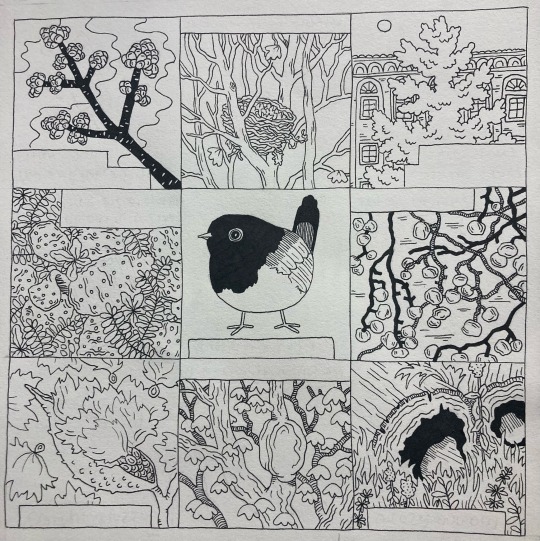
Outdoor wintertime scavenger hunt images I made for work!!
#illustration#drawing#my work#art#sketchbook#creature#natural history#scavenger hunt#outdoor winter activities
220 notes
·
View notes
Text
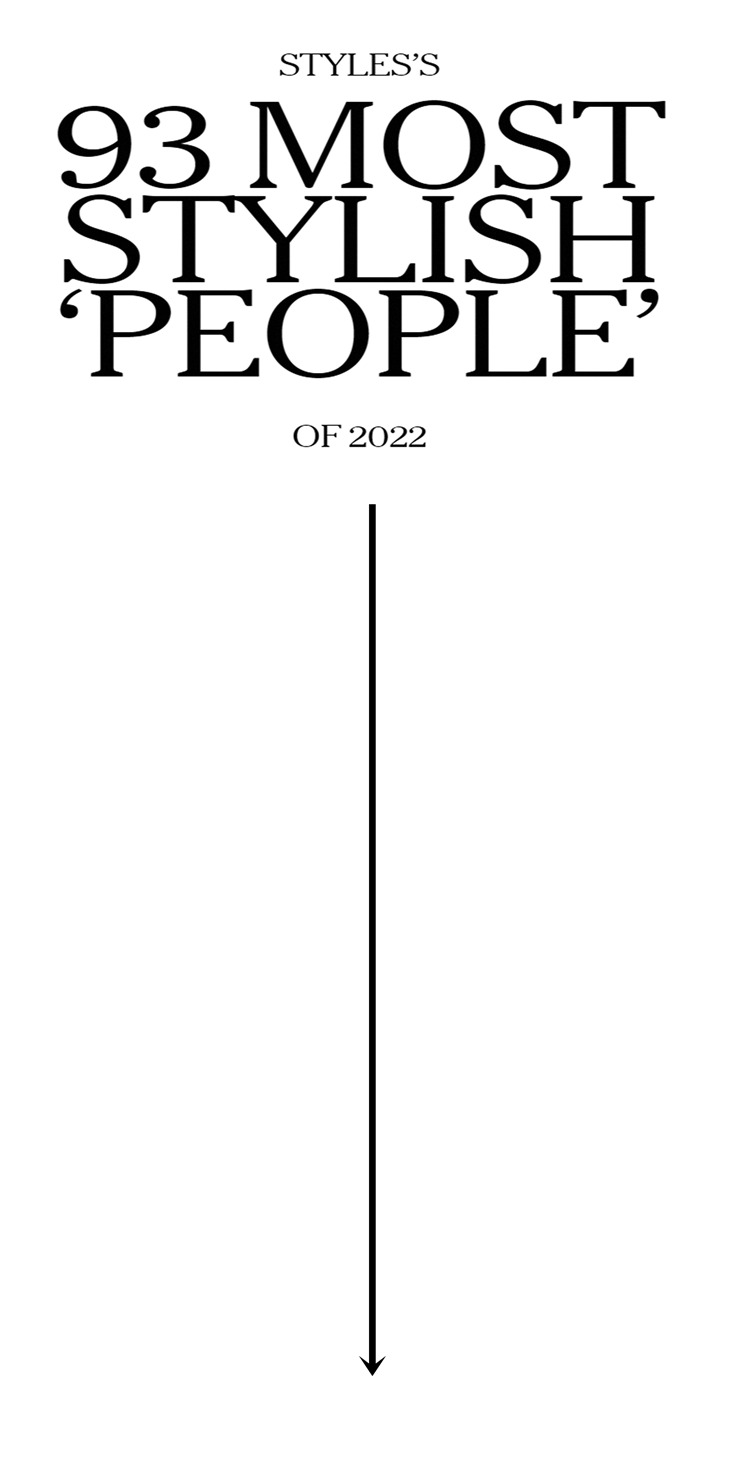
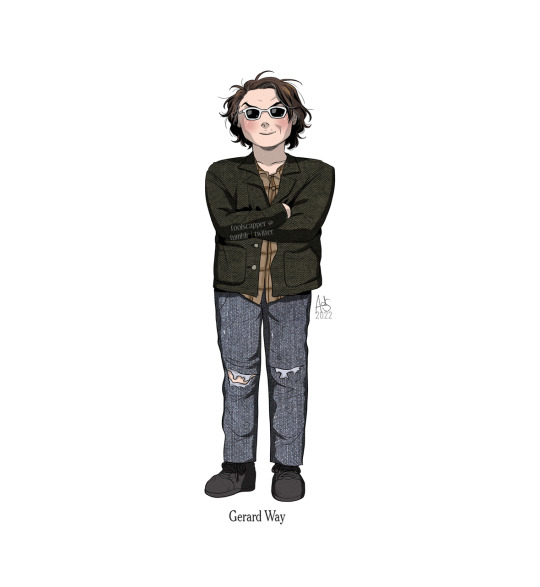
#my chemical romance#mcr#gerard way#my art#myfanart#my babe has (1) outfit for outdoor activities#and i support them
1K notes
·
View notes
Text


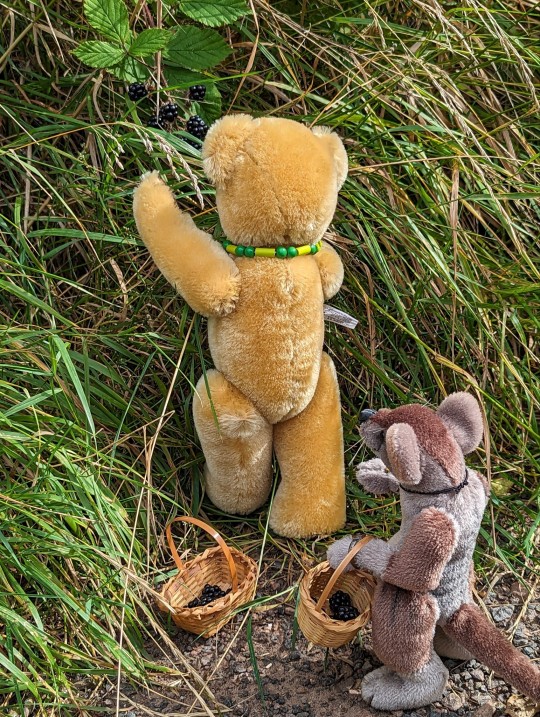

Thyme and Harold helping me pick some brambles by the road! Harold could reach a little further into the verge than Thyme (but not quite as far as me).
#Thyme the thylacine#thylacine#sewn by me#artist plush#teddy bear#Merrythought#plushie#toys#natural colour#outdoor photo#toy with accessories#fruit#food#picking berries just seems like such a teddy activity right?#didn't actually pick the ground level ones btw! only the nice higher up brambles for my tummy.#the mice can enjoy the ground brambles
296 notes
·
View notes
Text
People who are worried they aren't helping with climate change or any other big world problem bc they do something like make video games or art or are a cashier at a grocery store:
You are helping. You are making the art that helps me, an environmentalist actively working to restore biodiversity and ecosystems, get through each day. You are helping those of us on the front lines enjoy living or take a well-needed break. The person loading my groceries into my car is making it so I can eat that week and have enough energy to do my work. If you want to do more, you can volunteer, donate, and boost the voices of local community leaders working to protect and restore the local ecosystems, but don't feel bad if you can't. We are all in this together.
#the only people who should feel bad are the ones actively contributing to the problem more than anyone else is#i mean rich people who take private jets not you who threw away a plastic bottle instead of recycling it#and fill up their giant swimming pools during droughts (and dont even swim in them!!!)#i personally chose my field bc i didnt want to stand by as all this bad crap happened#and because i love being outdoors and i love critters#but everyone elses jobs are important too#even people who cant work are valuable bc you give us a reason to fight for a better world for you#eventually i may have to stop working if my health gets worse but that doesnt mean i wont be valuable#i hope this makes sense#ramble#conservation#environmentalism#save the earth
292 notes
·
View notes
Photo
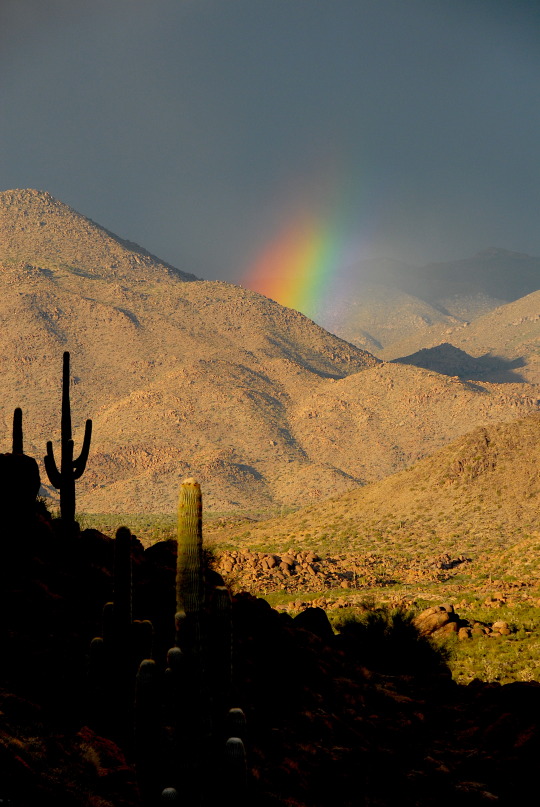
Gold in the Desert?
#hiking#hiking america#hiking arizona#mojave desert#suguaro#rainbow#monsoon#rainstorm#rainstormpics#pot of gold#end of the rainbow#travel photography#outdoor activities#outdoor weather
547 notes
·
View notes
Text
Environmental Generational Amnesia: When We Forget Nature’s Past
Originally posted at my blog at https://rebeccalexa.com/environmental-generational-amnesia/
One of the most traumatic and formative experiences of my life occurred when I was thirteen years old. The woods that I loved exploring behind our yard were completely bulldozed one day; I discovered this when I got off the bus from school. It was part of the destruction of an entire wild area that would become yet another subdivision devoid of trees and vines and wildflowers, with no place left for bobwhite quail or garter snakes in the flat green lawns. I was devastated, and in an attempt to try to help me my mom chatted with the developer when she happened to run into her in town. “She knows how you feel,” my mom said. “Her woods were the ones that were torn down to make the junior high track.” Not only did it just not make sense to me that someone who had been through what I was experiencing would then go on to do the same horrible acts, but it was also my first introduction to the reality of environmental generational amnesia.

The term was coined a few years ago in a paper by Peter Kahn and Thea Weiss. It refers to how each generation considers how it first experienced a place as its true baseline, and any change that comes after it is abnormal or unnatural. So for me, the track at my junior high with just a line of trees along the creek was my understanding of its baseline, but the developer remembered that land as acres of woods. A hundred years ago it may have been a farm. Go back several generations to when only the Osage lived here, and it was probably undamaged oak savanna, or perhaps a tallgrass prairie.
When you multiply that shifting understanding of the “normal” state of a place by all the people in a given area, something is bound to be lost as generations die off, and new ones are born into the present state. Couple that with a serious lack of nature literacy, and you have fewer people discussing what the place is versus what it once was.
In cases where almost all the land has been significantly changed by human activity for centuries, it can be incredibly challenging to piece together what it was like before we came through and wrought such imbalances. The only evidence may remain in a few remote undamaged patches, scraps of partial plant and animal communities, and oral and written information passed down by people, whether indigenous or colonizing. Sometimes ecologists and other scientists need to look at the ecosystems of neighboring areas to get some idea of what might have been here before. It’s often a matter of trying to piece together an incomplete puzzle, giving best educated guesses as to what filled the empty niches.

If you have a population that has a dim memory at best of what a place looked like before it was changed at all, they’re less likely to understand when there’s a problem. I knew, for example, that it was wrong to tear down the woods behind my home, but my baseline was “mix of trees and shrubs of various species surrounding a creek with a limestone bed next to a twenty year old subdivision.” No one could tell me what that farm looked like before it became a farm, and I didn’t understand at the time that the mix of plants and animals I knew and loved were neither the complete original assortment, nor were they all native. How was I to know that my yard was once spacious grassland, dotted with white oak here and there? How should I have come to understand that the woods I had cherished were badly out of ecological balance compared to what had once been, that they were exhibiting signs of recolonization after multiple massive disturbances before I was even born?
And this is just one example of one person’s understanding of one place. This environmental generational amnesia has rippling effects worldwide, with people not understanding that the rivers nearby aren’t supposed to be as stick-straight as they are, that the coastline should be covered in wetlands rather than open sand, that the dense forest is only there because natural fires were suppressed and allowed the trees to take over the last meadows. There are even those who have no idea that their air, water, and soil aren’t supposed to be loaded with pollutants, because pollution is all they’ve known for generations. It’s tough to imagine an extinct wetland when you can’t even see the water for the trash, and the sky is brown instead of blue.
It’s not going to be an easy task to try to revive the collective memory of Lands That Were. A good starting point is to talk to our elders, both alive and dead. When we ask those who still live what they remember of a place, we can glean important details even if they themselves weren’t ecologists, or formal scientists of any other sort. If we can take them to these places and have them show us where important landmarks were and describe what has changed, we can start to see more clearly what’s been lost. And when we read the writings and view the landscape art of those who are long passed, we get important snapshots of what was there long before any of us today were alive, tracing that ecological story closer to its origin.

We also need, more than ever, to preserve what ancient ecosystems still remain, whether that’s old growth forests, or prairies that never knew the tearing of the plow, or wetlands never drained or polluted. We can’t just miraculously replace them in a matter of a few years, and they offer us crucial pictures of the end goal in places where we are attempting long-term habitat restoration. They are living, breathing records of what places looked like before, of the biodiversity and other natural structures that were in place for thousands of years.
Finally, we need to be talking openly about the disconnect between what is and what was. If I, as an incredibly nature-obsessed kid, was startled to think about how my “normal” was only a faint shadow of past ecological glory, then imagine how jarring it must be for someone who is further removed from nature to understand that the forest they walk through is really supposed to be a prairie. (Especially after many years of being told that “planting trees” is the answer to all the ecological problems we face!)
With time and education we can bring about awareness, and that awareness will help us make better decisions for the future. There are so many people who want to undo ecological destruction and make the world a better place; we just need to have better, more accurate information out there on what can be reasonably done. Much of that hinges on having a clearer idea of what’s been lost, so that we can make plans to save whatever is left, and restore as much as we can.
Did you enjoy this post? Consider taking one of my online foraging and natural history classes, checking out my other articles, or picking up a paperback or ebook I’ve written! You can even buy me a coffee here!
#long post#ecology#habitat restoration#environment#environmentalism#conservation#nature#science#scicomm#colonialism#wildlife#natural history#outdoors#activism#climate change#climate activism#ecopsychology#conservation psychology
1K notes
·
View notes
Text

A couple of our writers ran into each other at a recent bird shoot. Lee Leschper (left) provides us with stories about Alaska hunting. Ralph Winingham (right) is a retired newspaper outdoors writer who provides us with tales of his memorable hunting exploits. Ralph's also an outdoor chef with a couple cookbooks to his name.
"This was at the annual Shoot for the Heart fundraiser for August Heart, a San Antonio nonprofit that has provided free cardiac screening for more than 62,000 high school athletes, to identify potential fatal and undiagnosed heart conditions. They have found more than 400 kids with potential heart issues, and undoubtedly saved some," Leschper said.
The parents of an 18-year-old athlete, August Koontz, who died in his sleep from an undiagnosed heart condition, founded the organization.
4 notes
·
View notes
Note
Hi! You're art is beautiful 😍 I know they're not at the point of sharing their feelings yet, but I could see Mario showing Peach what "commoners" do for fun.
It would be something very sweet and simple where they spend the day together on a "date" without calling it that.
They are so smitten I can't stand it 😍😍
Thanks a lot! ^-^ And OMG yes!! Definitely! 🤭💕 Mario would show Peach all sorts of little activities that she has never indulged in before, and they would both feel giddy from the novelty.
As for whether it could be called a date or not... most citizens of the Mushroom Kingdom would already have their own minds made up on the subject. 😉



#Mario#Princess Peach#Mareach#Toad#Toadette#conspiring buddies#I mean OF COURSE everyone would ship them xD#just look at them!! T.T#they're out there living their own soap opera and aren't even aware of it#just being absurdly cute and hopelessly in love#bless them!#outdoor activities#Sunshine tightrope#Super Mario Bros#fanart
846 notes
·
View notes
Note
what was the leash training thing❔
Omg so a houseline isn't leash training Per Se, but the basic idea is that you keep a line on your pup at ALL times, for the early part of their training. For Hugo (and most dogs) that'd be a leash that you cut the handle off of, so it can't get caught on anything. For smaller breed dogs, I've seen people use very lightweight stuff, like macrame rope lol.
It might sound like it's a strict thing, but dogs don't really give that much of a shit abt it, and you can correct behavior much much more easily.
Puppy careens toward a pill dropped on the ground, you don't have to actually catch them, you can stomp on the line! You need them to come to you, you don't have to play a game of chase, you just reel them in. Someone opens the front door unexpectedly- stomp on the line. Puppy is jumping up on people, you can use the line to encourage them to stay on all four feet. Etc etc etc. Training tool, safety tool, convenience tool.
I definitely think it saved me and Hugo from a lot of moments that could've been a lot worse. Another thing about the houseline is that it keeps you from fucking up the process of getting the dog used to being handled and touched. Without the line, there are a lot of situations where you need to GRAB the puppy all of a sudden, and maybe it's scary. A lot of dogs are Hand Weary. So there's no negative association attached to your touch, and you don't run into a situation where the puppy is reactive to being Reached towards. The leash that's always been attached to me forever and ever and is sometimes directed by, idk, god? Not scary. Big hands reaching towards me very suddenly? Scary!
Anddd that's why Hugo has a raggedy leash on in every puppy photo!

#you asked a simple question about dog stuff I hope you like walls of text!!!!!!#this was a tip that I'd never heard of and now I recommend it to other ppl when they get puppies. It's actually pretty common#The houseline comes off when your dog gets a little bit more responsible and/or you've had a chance to teach them Stay/Wait/Leave It#in an effective manner#There's also the outdoor version of this. a longline lmao#which is an extremely long leash with- yes- the loop cut off the end#for outdoor activities where your dog is Off Leash but really needs to have a tether#like if you're at the beach or something?#all the same conveniences except this time the line is like 20 feet long#sergle answers
214 notes
·
View notes
Text

84 notes
·
View notes
Text
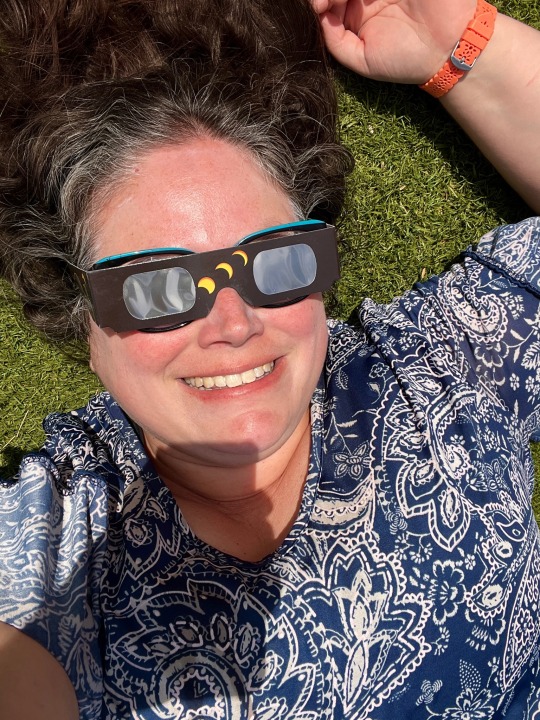
Arizona’s only got like a 75% solar eclipse but you know what I’m definitely feeling 75% less personally victimized by the sun than usual.
#thanks moon you’re a real one#gpoy#also I’m not sunburned that’s just my face after any mild activity outdoors
32 notes
·
View notes